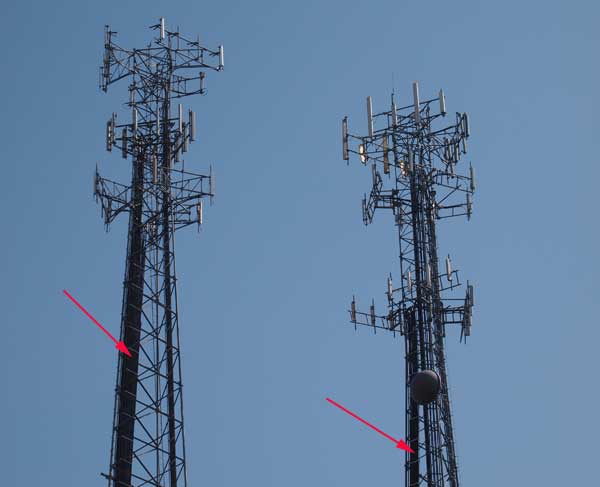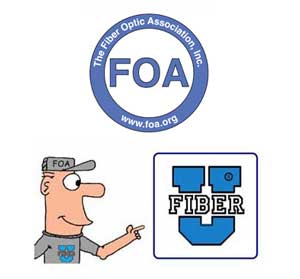Fiber
To The Antenna (FTTA)
Intended
For:
- Anyone
new to fiber to the antenna (FTTA) for cell towers who
wants to learn how it works
- Designers
and installers involved
in projects with DAS cabling
- Managers
and supervisors involved in projects with DAS cabling
- May be used as additional preparation for the CFOS/W
Certification Exam
Objectives:
From this self-study program you should learn:
- How
FTTA
systems are designed
- How
cabling connects all elements of a FTTA
cellular antenna system
- What
types of cabling (copper-fiber hybrid) are used in
FTTA
systems
- Issues
in installing and testing FTTA
cabling.
- Prerequisites

When
you finish, you can take an online exam on this course to
qualify for a "Fiber U Certificate of Completion."
Introduction
Wireless
traffic is growing at a phenomenal rate. AT&T says
their cellular data traffic grew 50,000% (that's 500
times) between 2007 (the introduction of the iPhone)
and 2014. The landscape is covered with cellular
towers to provide geographic coverage, but to handle
the growth in traffic, they need more antennas. Towers
that one had 3 antennas now have one or two dozen to
cover all the new frequencies.

There are two issues we cover in our FTTA
material that affect every cell tower or cell antenna
installation (such as on the roof of a building.) The
increased number of antennas require more cables up
the tower and smaller, lighter fiber cables are
replacing the old big, heavy copper coax cables. Then
the towers need to connect into the phone system and
the towers need more bandwidth in their connections,
so those connections require fiber backhaul.
This course will deal primarily with FTTA but will
also discuss fiber backhaul, more appropriately
covered under the topic of OSP fiber. Fiber U has an OSP
fiber optics course also. The course covers how
fiber to the antenna systems are designed, installed
and tested. The information provided should be useful
to the tech doing the installation, their supervisors
and management involved in cell tower systems.
Safety is a big issue on FTTA installations. Besides
the usual concerns over fiber safety, there are the
issues associated with climbing towers and doing work
up in the air. Some of the processes developed for
FTTA are designed to make installation easier but
safety planning and training (OSHA in the US) for all
personnel is very important.
Assignments
You
will be instructed to read the references or watch videos
and take the quiz (Test Your Knowledge) to complete the
"classroom" part of the course.
Get
Started
Watch
The Video
FOA
Lecture 37 Fiber To The Antenna (Cellular
Towers)
Read
The Online FOA Reference
FOA
Reference Guide, Fiber For Wireless
FOA
Reference Guide,
Fiber To The Antenna
FOA
Reference Guide, Testing FTTA
Test
Your Knowledge - FTTA
Cabling Quiz

When
you finish the assignments and case study, you can take an
online exam on this course to qualify for a "Fiber U
Certificate of Completion." The exam cost is $20US.
Go
here to take the Fiber U FTTA Certificate of Completion
exam. Here
are detail directions if this is your first time
taking a Fiber
U Certificate of Completion exam.
This information is
provided by The Fiber Optic Association, Inc. as a
benefit to those interested in teaching, designing,
manufacturing, selling, installing or using fiber optic
communications systems or networks. It is intended to be
used as an overview and/or basic guidelines and in no
way should be considered to be complete or
comprehensive. These guidelines are strictly the opinion
of the FOA and the reader is expected to use them as a
basis for learning, as a reference and for creating
their own documentation, project specifications, etc.
Those working with fiber optics in the classroom,
laboratory or field should follow all safety rules
carefully. The FOA assumes no liability for the use of
any of this material.
|
